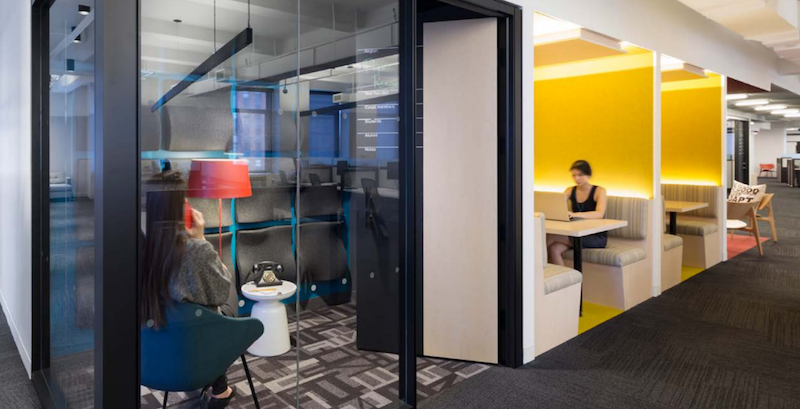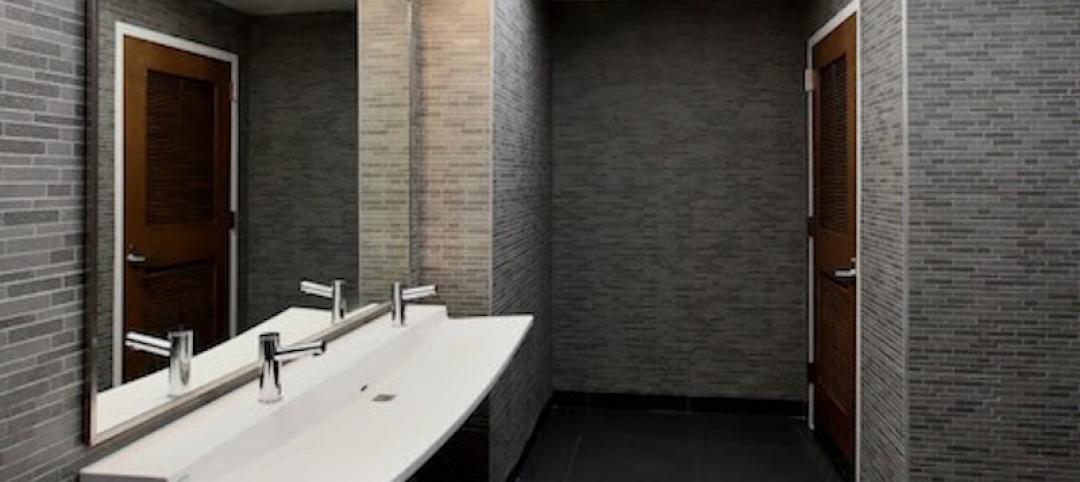HOK’s WorkPlace practice, in partnership with the UK Chapter of CoreNet Global, has released a new report that studies the impact of coworking from a corporate real estate (CRE) perspective.
Coworking is one of the fastest-growing sectors of the commercial real estate market. The new report, Coworking: A Corporate Real Estate Perspective, examines the drivers of coworking from the demand and supply sides, the industry risks and implications for corporate real estate, as well as information about the owners, coworkers and centers.
The HOK/CoreNet Global Coworking report highlights the ideas that changing business priorities and the need to attract talented people, reduce real estate costs, improve speed to innovation and increase productivity are driving corporations to consider different workplace models, including on- and off-site coworking.
Key findings from the Coworking report also include:
- The coworking concept is evolving to comprise accelerators, incubators and maker spaces. It reaches beyond office settings to include college campuses, retail locations, hotels and libraries.
- The impact of coworking spaces on CRE includes providing new uses for older properties and for underutilized spaces in existing facilities.
- The lowest engagement levels are found in employees who never work remotely. The highest employee engagement levels occur among those who work remotely less than 20% of the time.
- Many coworking centers emerged in a time of high unemployment and low rents. But 54% of the coworkers will leave a specific location in less than a year. The high turnover and tenant instability challenge coworking centers to maintain profitability. They are vulnerable to market conditions and new competitors.
“For corporate occupiers and other real estate professionals, the coworking trend is worth watching, exploring and testing,” said Curtis Knapp, director of consulting for HOK. “It is a way to add flexibility to the portfolio and help match the ebb and flow of supply and demand. It can be one solution to the many challenges posed by the changing nature of both work and worker.”
Related Stories
Industry Research | May 4, 2017
How your AEC firm can go from the shortlist to winning new business
Here are four key lessons to help you close more business.
Engineers | May 3, 2017
At first buoyed by Trump election, U.S. engineers now less optimistic about markets, new survey shows
The first quarter 2017 (Q1/17) of ACEC’s Engineering Business Index (EBI) dipped slightly (0.5 points) to 66.0.
Market Data | May 2, 2017
Nonresidential Spending loses steam after strong start to year
Spending in the segment totaled $708.6 billion on a seasonally adjusted, annualized basis.
Market Data | May 1, 2017
Nonresidential Fixed Investment surges despite sluggish economic in first quarter
Real gross domestic product (GDP) expanded 0.7 percent on a seasonally adjusted annualized rate during the first three months of the year.
Industry Research | Apr 28, 2017
A/E Industry lacks planning, but still spending large on hiring
The average 200-person A/E Firm is spending $200,000 on hiring, and not budgeting at all.
Architects | Apr 27, 2017
Number of U.S. architects holds steady, while professional mobility increases
New data from NCARB reveals that while the number of architects remains consistent, practitioners are looking to get licensed in multiple states.
Market Data | Apr 6, 2017
Architecture marketing: 5 tools to measure success
We’ve identified five architecture marketing tools that will help your firm evaluate if it’s on the track to more leads, higher growth, and broader brand visibility.
Market Data | Apr 3, 2017
Public nonresidential construction spending rebounds; overall spending unchanged in February
The segment totaled $701.9 billion on a seasonally adjusted annualized rate for the month, marking the seventh consecutive month in which nonresidential spending sat above the $700 billion threshold.
Market Data | Mar 29, 2017
Contractor confidence ends 2016 down but still in positive territory
Although all three diffusion indices in the survey fell by more than five points they remain well above the threshold of 50, which signals that construction activity will continue to be one of the few significant drivers of economic growth.
Industry Research | Mar 24, 2017
The business costs and benefits of restroom maintenance
Businesses that have pleasant, well-maintained restrooms can turn into customer magnets.

















